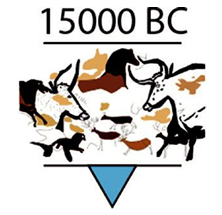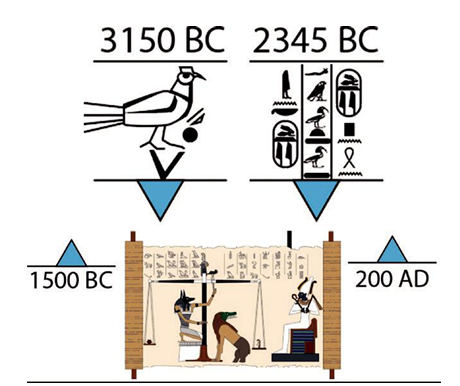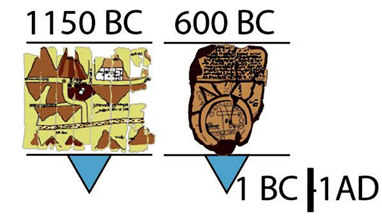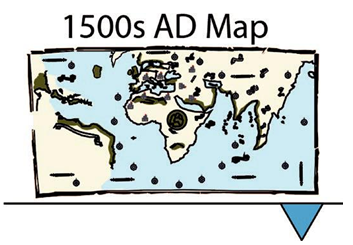Ancient History–Pre-1600 AD – What Are Infographics?
One of the earliest forms of drawings that you are probably aware of is the cave paintings of Lascaux near Montignac, France. Some anthropologists believe them to be around 17,000 years old (15,000 BC). While this is considered an example of Paleolithic art, some anthropologists and art historians wonder, “Could this be a representation of a past hunting expedition or some type of mystical ritual?” For today’s modern viewers, we cannot be sure as there is no text or familiar icons that come with the drawing, so we are left unsure as to the artists’ true intentions. At the very least, it does give us a clue as to what animals existed in the ancient landscape. Refer to Figure 1-2.

Figure 1-2. Recreation of animals in a cave painting in Lascaux, France
Over the millennia, text has diverged out of the pictorial image. Yet pictures and text continued to be placed together to give clearer instructions. Instruction was something that became very important to ancient cultures such as the Egyptians. One example we can consider, besides the myriads of hieroglyphics painted or carved on pharaohs’ tombs, would be the ancient Book of the Dead, possibly compiled around 1500 BC. Though the origins of the original writing of hieroglyphs are much older, about 3150 BC, the actual concepts of the ritual came about in 2345 BC, as its text and images appeared in the tombs of the kings. In 1500 BC, the Book of the Dead consisted of papyrus scrolls of priests’ instructions appearing with pictures and hieroglyphics explaining various funerary spells that they felt could help the deceased person through the underworld into the afterlife successfully. This text continued to be used up until about 200 AD. Refer to Figure 1-3.

Figure 1-3. Recreation of ancient Egyptian hieroglyphics and part of the scroll symbols in the Book of the Dead
Other cultures and religions, such as Christian, Mayan, Tibetan, Buddhist, Hindu, and others throughout the world, if they had separate languages in written text and illustrations, often tried to compile sets of instructions on the topic of ritual, religion, or a way to live. These are the origins or roots of the first infographics.
However, over time graphic instructions changed into other ways to visually quantify knowledge; this included such topics as health, weather, agriculture, life cycle, and territory.
When we think of a group marking out a territory, we should consider maps. One of the earliest maps was created in Egypt in 1150 BC, known as the Turin Papyrus Map. One of the earliest world maps was created in 600 BC in Babylon on a clay tablet and is considered a flat earth diagram. Refer to Figure 1-4.

Figure 1-4. Recreation of ancient Egyptian map and Babylonian clay tablet map
Many other nations and cultures, in order to keep a record of their territories, continued to create maps that included typographical drawings and text explaining the regions depicted. Refer to Figure 1-5.

Figure 1-5. Recreation of ancient map from the 1500s of the known world
Ideas about how a map was to be depicted gradually changed over hundreds of years. Today we see these maps in the present day in books as well as folded road maps and the GPS we use in our vehicles.
